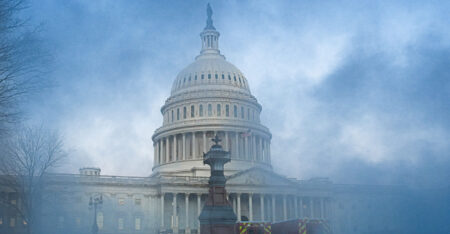It’s no secret that regulation hits the poorest Americans the hardest. Academic research has long demonstrated that environmental regulations impose a higher cost on low-income Americans than they do on the general population.
The phenomenon is most visible in the automobile sector, where the average price for a new car was $48,008. Even the least expensive new cars available in 2023 averaged over $20,000. With a third of American households earning under $50,000 per year and nearly a quarter earning less than $35,000, a new car is out of reach for too many American families.
Of course, nothing in the Constitution gives Americans the right to have a new car. Some goods are just expensive. A midrange Rolex also costs around $20,000, and no one would argue that every working American should be able to afford a Rolex.
But cars are different for two reasons. First, car ownership is a key ingredient in improving the lives of low-income Americans. For example, research shows that Americans are far more likely to get off welfare if they own a car. Having a car also leads to better educational and health care outcomes.
Second, cars are more expensive because of Washington rules and regulations. One study estimates that the combined cost of regulation on vehicle prices is as high as 20%, which in dollar terms is $6,000 to $7,000 or more per vehicle. A Heritage Foundation study on the impact of fuel efficiency standards during the Obama administration found that vehicles could be as much as $7,100 less expensive if not for those regulations alone. (The Daily Signal is the news and commentary outlet of The Heritage Foundation.)
But don’t we need regulations to make cars safe?
Maybe. But regulation alone does not improve safety, and just because some mandate or standard could marginally improve safety doesn’t mean that it should be required. Consider that about 33 people died for every 10,000 vehicles being driven in 1913. Ten years later, that number dropped by 63% to approximately 12 deaths and then dropped over 83% to five by 1966.
The year 1966 is important because that’s the year that the National Traffic and Motor Vehicle Safety Act was passed, which provides the statutory foundation for much of Washington’s authority to regulate auto safety.
The question then becomes whether autos become safer after the legislation was passed. By 2021, the number of deaths for every 10,000 vehicles did fall to 1.6, but that number is hardly an improvement over the massive gains made prior to the 1966 Act. Further, while it’s also true that important safety improvements like seat belts, collapsible steering columns, and shatterproof windshields were mandated after the act was in place, these improvements, in all likelihood, would have been made anyway as consumers demanded greater safety, as was demonstrated before the act.
Even if regulation is the only reason these important safety upgrades were made, it doesn’t justify the endless barrage of regulatory requirements we continue to see. Backup cameras and tire pressure indicators are nice and do provide an additional element of safety, but should they be required?
And more rules are being lined up all the time, like automatic idling shut-off, automatic emergency braking, lane change and crash warnings, driver monitoring, headlight regulation, and the list goes on.
Something often not considered is what safety improvements were never introduced because car manufacturers spent limited resources on meeting regulatory requirements rather than on developing the safety features that consumers wanted most at the most affordable prices.
And then there are antiquated tariffs, specifically, the so-called chicken tax, which is a 25% tariff on certain light-duty trucks that are available in most countries. This increases the price such that they aren’t even offered in the United States.
Despite all of this, the average price for automobiles has remained relatively stable over the years with auto prices lagging slightly behind general inflation. Indeed, many justify the increased regulatory burden by pointing out that the price of cars has not increased as compared to the broader economy.
But this ignores two very important real-world implications.
The fact is that autos would be much less expensive today and consumers would have a much wider selection of products and price points if not for Washington’s heavy hand.
This, after all, is the normal trajectory of most consumer products. Televisions, personal computers, and microwave ovens are all good examples of what happens when new technologies are introduced to the marketplace. They are initially extremely expensive and relatively low-tech. But as the technology develops and competition drives innovation and lower prices, these items become more capable while also becoming more affordable to most Americans.
This is exactly what happens elsewhere in the world where government regulation of automobiles is not so heavy-handed. Take the wildly popular Toyota Land Cruiser 7, for example. This highly capable SUV is literally selling out in countries where it’s available, which is not surprising. It does all the things one might want from an SUV and comes in with a price tag under $35,000. But they are not available in the United States because they don’t comply with U.S. rules and regulations.
Toyota offers other even more budget-friendly pickups such as the Hilux, which can cost as little as $15,000, as well as other economical options. Suzuki offers the Jimmy at a mere $15,000. None of these will be available in the United States because of regulations. This is absurd, and every American should demand better.
Have an opinion about this article? To sound off, please email letters@DailySignal.com, and we’ll consider publishing your edited remarks in our regular “We Hear You” feature. Remember to include the URL or headline of the article plus your name and town and/or state.
Read the full article here














